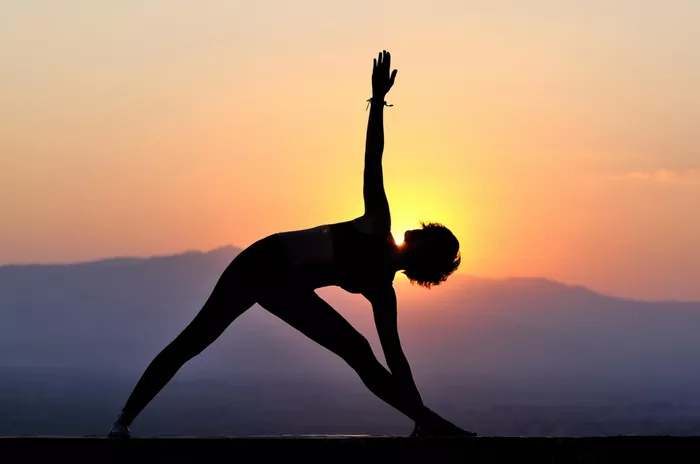Shadow Yoga, a lesser-known yet profound branch of yoga, holds its roots deeply embedded in ancient traditions. Often overshadowed by more mainstream yoga practices, Shadow Yoga offers a unique approach to physical, mental, and spiritual well-being. In this article, we embark on a journey to unravel the intricacies of Shadow Yoga, exploring its origins, principles, techniques, and significance in contemporary practice.
Origins and Evolution
Shadow Yoga traces its origins back to the ancient texts of Hatha Yoga and Tantra, specifically the Hatha Yoga Pradipika and the Gheranda Samhita. However, it was the renowned Indian yogi Shandor Remete who formalized and popularized Shadow Yoga in the modern era. Born in Hungary, Remete underwent rigorous training in yoga and martial arts in India before developing Shadow Yoga as a synthesis of these disciplines.
Philosophical Underpinnings
At the core of Shadow Yoga lies a profound philosophical framework rooted in the concept of “the Shadow.” In yogic philosophy, the Shadow represents the unconscious aspects of the psyche, encompassing suppressed emotions, fears, and desires. Through the practice of Shadow Yoga, practitioners endeavor to bring these shadows into conscious awareness, thereby facilitating self-realization and inner transformation.
Principles of Practice
Shadow Yoga is characterized by a set of fundamental principles that guide its practice:
1. Preparatory Forms: The practice begins with a series of preparatory forms, known as “marmasthana samskara,” which focus on loosening the joints, activating the breath, and cultivating awareness of the body.
2. Angahara: Angahara refers to dynamic movement sequences that build strength, flexibility, and coordination. These sequences are designed to awaken prana (life force) and facilitate the circulation of energy throughout the body.
3. Karanas: Karanas are intricate, choreographed movements that combine rhythmic stepping, flowing transitions, and precise hand gestures. These sequences serve to harmonize the body, breath, and mind, fostering a state of meditative absorption.
4. Asanas: Unlike traditional yoga asanas, which are often static and held for prolonged periods, Shadow Yoga emphasizes dynamic asanas that flow seamlessly from one posture to another. This dynamic approach challenges practitioners to maintain presence and mindfulness amidst continuous movement.
5. Bandhas and Mudras: Bandhas (energy locks) and mudras (symbolic gestures) play a crucial role in Shadow Yoga practice, facilitating the regulation and redirection of pranic energy within the body.
Techniques and Methodology
Central to the practice of Shadow Yoga are its unique techniques and methodologies, which are meticulously designed to facilitate holistic development:
1. Bahiranga Sādhanā (External Practice): This phase of practice focuses on refining the external aspects of movement, alignment, and breath control. Practitioners work on mastering the physical forms and transitions, cultivating strength, flexibility, and proprioception.
2. Antaranga Sādhanā (Internal Practice): As proficiency in external forms is attained, practitioners delve into the subtler dimensions of practice, including breath retention, visualization, and meditation. This phase emphasizes internal awareness, energetic sensitivity, and the integration of body, breath, and mind.
3. Vayus and Nadis: Shadow Yoga recognizes the role of vayus (subtle energy currents) and nadis (energy channels) in regulating physiological and psychological functions. Through specific techniques such as pranayama (breath control) and visualization, practitioners learn to manipulate these subtle energies for healing and self-transformation.
4. Kriyas and Shatkarmas: Kriyas (purification practices) and shatkarmas (cleansing techniques) are integral components of Shadow Yoga, aimed at purifying the physical and energetic bodies. These practices may include nasal cleansing, digestive tract purification, and internal cleansing rituals.
Significance in Contemporary Practice
In an era dominated by fast-paced lifestyles and external distractions, Shadow Yoga offers a profound antidote, inviting practitioners to journey inward and confront the shadows within. Its holistic approach addresses not only physical fitness but also mental clarity, emotional resilience, and spiritual evolution.
Moreover, Shadow Yoga serves as a bridge between the ancient wisdom of yoga and the modern realities of daily life. Its emphasis on dynamic movement, mindful awareness, and energetic alignment makes it accessible to practitioners of all ages and backgrounds, offering a path to holistic well-being in the midst of contemporary challenges.
Conclusion
In conclusion, Shadow Yoga stands as a testament to the enduring wisdom of ancient yogic traditions. Through its unique blend of dynamic movement, breath awareness, and spiritual inquiry, it invites practitioners on a transformative journey of self-discovery and inner illumination. As we delve deeper into the shadows within, we emerge not only stronger and more resilient but also more attuned to the vast expanse of our true nature.
















